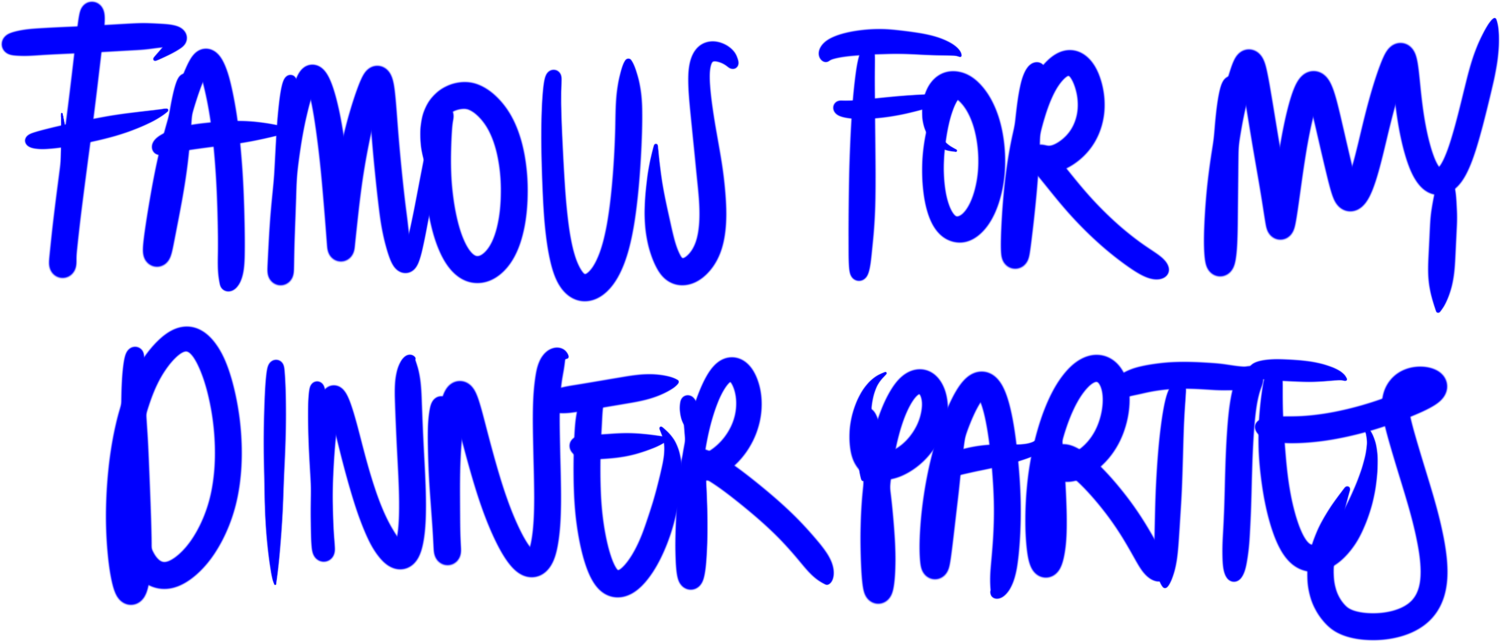FOOD.COM: THE WORLD WILD WEB OF FOOD
There was once a time when most of life played out outside, and it wasn’t just before our species began constructing shelters to cloak ourselves from the elements: being social animals, all human interaction, all trade, all of culture — for the longest time, life required us to leave the house. One invention radically changed all that. Since the introduction of the internet to the general consumer in the nineteen-nineties, we have become increasingly less dependent on the so-called real world. Our money now exists online, our films and music are online, our business meetings take place online, we do our shopping and meet our friends online — in some cases, entire sex lives play out online, too. One element of our existence, however, has resisted the internet to a large extent: so long as we are human, we will need to eat real food. No real-life Willy Wonka has stepped up yet, beaming chocolate bars into our homes through the magic of teleportation. We simply cannot eat online. But, of course, that doesn't mean we can’t find our recipes online, order our ingredients or take out pizza online and on and on and on. Here are five strange tales of how food and the internet met, awkwardly.
THE BLOGOSPHERE.COM
It isn’t often that truly new ground is broken, but it happened on Tuesday, July 1, 1997. Phew…what a day — happens to be the title of what is widely considered to be the very first entry of any food blog on the newly popular world wide web. That same year, Jim Leff and Bob Okumura had founded a website titled Chowhound, which was a gathering place for foodies, or “chowhounds”, to exchange tips about where to eat in and around New York City. “What Jim Had For Dinner” first appeared on the website on July 1 as what was then probably called a column — seeing as the word ‘weblog’ wasn’t coined until December 17 of that same year. That day, Jim wrote about breakfast pork sandwiches, silly Nutella knock-offs, low fat EVERYTHING, chicken paprikash and microwaved cherry strudel — and people ate it up.
Soon, food blogs were everywhere, but the form didn’t truly become mainstream until Julie Powell started her “Julie/Julia Project” on Sunday, August 25, 2002: “Risking her marriage, her job, and her cats’ well-being, she has signed on for a deranged assignment.
365 days. 536 recipes.” The 536 recipes are all the recipes included in 1961’s bestselling Mastering the Art of French Cooking by Julia Child — who didn’t think Julie’s project was to be taken seriously. It was the internet, after all. Regardless, it became a book, Hollywood came knocking, and riding that wave, ever more people left day jobs to venture into the world of online fame. There were reports of dinners in restaurants and at street vendors, there were recipes mixed with winding personal stories that people actually read: it’s easy to forget how text heavy the early internet was. In fact: “What Jim Had For Dinner” contained NO photos. Of course, the golden age of the food blog had to end with the rise of visual social media platforms — and although some food bloggers are still popular, there is now much less slamming on keyboards and much more slapping of ingredients onto cutting boards in fast-edited reels. Funny how the early internet now feels, I don’t know, quaint.
THE PUDDING.BR
Oh, the Internet! How fast it changes! How dazzling and dizzying a world! Or is it? In some far corners of the world wide web, time seems to have been standing still: no need to bring back y2k when it never left. One such corner is www.pudim.com.br, a Brazilian website someone has been paying the costs of domain and hosting for since the year 2000 — only to show an unchanging, low-fi photo of a flan. As 2015 rolled around, the website had had a fifteen-year run, and nothing seemed to stand in its way, not even the fact that it received the title of “worst thing on the Brazilian internet”. There was something reassuring about a website so stubbornly and inexplicably bad, a safe haven for those seeking simpler times in a world now firmly in the grips of highly saturated Instagram filters. It seemed to be a story for the books, as bizarre a history as any website could have.
But it all changed on April 9th of that fateful year. Reports started floating around on Brazilian social media that day that the safe haven had been breached: www.pudim.com.br had been hacked by none other than the Islamic State. News outlets reported of “a severe blow to the Brazilian internet”, as order was quickly restored. By the following afternoon, everything was back to normal. The near death of a Brazilian classic only served to further strengthen the bond between the public and the pudding. Because as they say: Don’t it always seem to go that you don’t know what you’ve got till it’s gone?
THE FAKE RESTAURANT.CO.UK
Imagining a life without the internet feels like living with only half a brain, or life without any other people. In its short existence, the internet has become so ingrained in modern life that it’s hard to believe things ever truly functioned without it. It has changed the way we exist as a species — and, thus, the way we eat. Looking for a nice restaurant for date night, one might turn to a little website called TripAdvisor to find out what’s hot. In its mere twenty years of existence, it has truly democratised food criticism — no longer do we rely on a few snobby newspaper critics to tell us which food is worth our time and money.
But that is also its downside: when there is no one to be held accountable, it creates fertile ground for fakery. A British lad named Oobah Butler decided to test how far he could push this aspect of the internet when, in 2017, he not only created fake TripAdvisor reviews, but an entire fake restaurant. With the help of an army of commenters, a good dose of mystery and exclusivity, he was able to push his non-existent restaurant to London’s top spot in a mere six months time. He then did something unimaginable: he opened “The Shed” for a real, one-night-only of microwave dinners served in an unkempt London backyard. When reactions were still positive, when people asked to book a table to come back, he proved once and for all that our species’ unwavering faith in hype is older than time — perhaps even older than the internet.
@THE PINK SAUCE
It’s been three decades since the internet was opened up to the general consumer and homes across the world were first connected by its magic. Sure, it had its growing pains: we waited endlessly to dial in, we lost our money in the dot-com boom, we pirated until celebrities could no longer pay their mortgage. But all’s well that ends well, right? Well, probably — but we’re still waiting for it. It’s June 2023 and the internet is still just so… messy. Let’s return, for a brief moment, to June 2022: A netizen named Chef Pii uploads a video to Tiktok in which she douses her food in a ranch-type sauce that is extremely pink — like, viral video pink — presenting it as completely natural and organic.
In less than a week, the video has six million views and the internet is obsessed. Naturally, Pii decides to bank on her success and starts bottling the pink sauce for a hefty twenty dollars a pop — and everything goes wrong. First, people are angry over some shipping issues, then they freak out about nutrition labels that make little sense. They proceed to blame Pii for lying about the recipe, saying she must have used mayonnaise as an emulsifier, even though it’s not listed. But that is only the beginning. Soon, people have apparently died from botulism after eating the sauce and the internet is in a rage. Luckily, popular YouTuber and food scientist Ann Reardon enters the arena to debunk all of the incriminating claims in a video on her channel How To Cook That, giving back Chef Pii some of the respect the internet brutally took from her. Turns out nothing, not even something as innocent as a pink sauce, is safe in the hands of netizens.
This place really kind of sucks.
MUKBANG.KR
As more parts of human life began to shift to an online existence, it alleviated a lot of stress factors for introverts. We no longer have to leave the house for our entertainment, to speak to friends — real or virtual —, or to do our work; in some cases sex lives play out entirely online, too. One problem had not been solved until recently, however: although it’s occasionally fine to eat alone, so much of the enjoyment of food has to do with the social aspect of eating. Eating alone can make a person feel lonely.
This problem was solved once and for all in South Korea around 2010, when livestreamers started broadcasting themselves… eating. In a country with an eating culture that is about bringing people together, there was a real need for this type of connection in increasingly solitary times. The first mukbangs were livestreams on a website called AfreecaTV, but as interest in Korean culture grew after the viral success of Psy’s Gangnam Style in 2012, they were soon uploaded to YouTube in order to reach a wider audience — and before long, it wasn’t just Koreans who made this type of content.
Much like cooking shows are always looking to find new techniques and cuisines to showcase in order to keep audiences engaged, mukbang over time has gotten increasingly extreme. These days, the only way to interest an audience is seemingly to eat shocking amounts of unhealthy food — and it isn’t without consequence. Some streamers have died of obesity related illness, another passed away after choking live on air. And, yet, there are no signs of the trend itself dying down.
Text: Yannic Moeken











